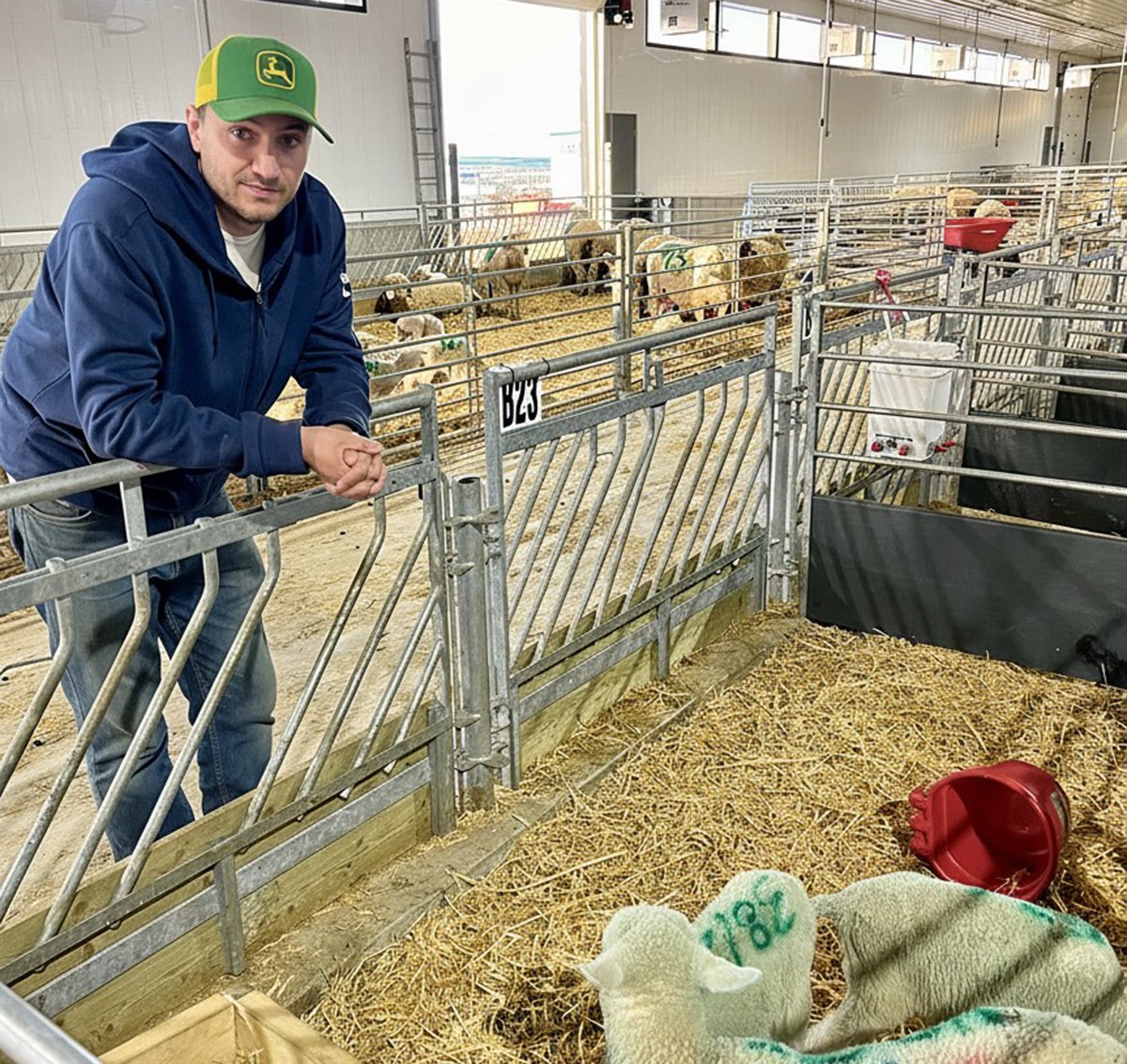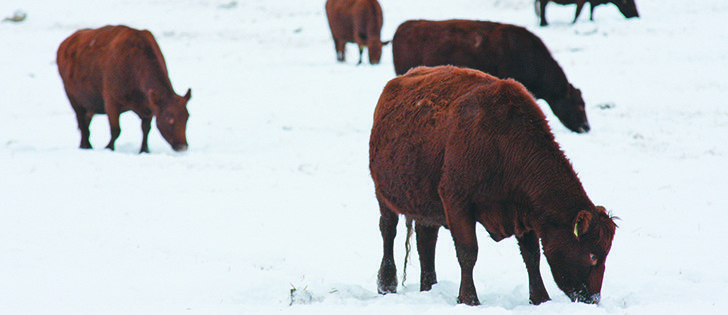Winter swath grazing | Producer planned to keep cattle out on pasture until spring but must now switch to Plan B
The recent southern Alberta blizzard didn’t just block roads and delay flights. It also buried five months of swaths that Ian Murray planned to feed his cow-calf pairs this winter.
The blizzard whipped the snow bare in some parts of the field and left drifts a metre and a half deep in others. More concerning is that the wind froze the snow solid.
“It’s crusted over and it’s hard. I’m realizing I’m just as screwed as I thought I was,” Murray said soon after returning from inspecting the field.
Read Also

Solar, sheep provide valuable farm diversification
Eric Steeves says raising sheep on forages grown under solar panels provided economic stability and perhaps even saved his family’s fifth generation southern Alberta grain farm.
The 100 acres of oats, barley, peas and volunteer canola swaths were the best he’s had in the seven years he has practiced winter swath grazing on his farm near Acme.
“It should have been an absolute salad bar.”
The 150 pairs normally graze on the swaths until the end of February when the calves are weaned. The cows return to the swaths until the end of April, just before May calving.
The cattle are now in the corrals eating hay stockpiled for calving. Murray may wean the calves when the cold snap ends and adjust his feeding plans. Before abandoning the swaths, he might send the cattle back out when the weather warms and see how they fare.
Murray said winter swath grazing is usually a cost effective way to feed cattle. A late March snowfall crusted over the swaths last year, but only a few were left to graze and he let the cows pick through what was left.
“I’ve never had a situation like this, this early in winter before,” said Murray, who raises cattle through a Natural Beef program.
“It’s definitely changing the game. I don’t want to go back to hauling the cows hay every day,” he said.
“It’s a fabulous way to winter pairs, but it has its challenges and you need a back-up plan.”
Murray doubts a chinook will melt the snow because of Acme’s more easterly location.
“It’s possible, but unlikely. It’s turning into a situation where April can’t come fast enough.”
Barry Yaremcio, a beef specialist with Alberta Agriculture, said producers take a 50-50 chance that bad weather will force them to adjust their swath grazing plans.
“The snow is either too deep or too hard,” said Yaremcio.
Farmers who swath graze need a Plan B and possibly a Plan C if the weather turns nasty, he added.
Yaremcio said farmers may need to break the crust off the end of swaths with a tractor blade to expose the feed.
He warned that feed quality will not be the same in the spring as it is under the snow. Farmers should calculate a 10 to 15 percent drop in protein and a 10 percent drop in energy levels.
“It’s never as good in the spring after the melt.”















